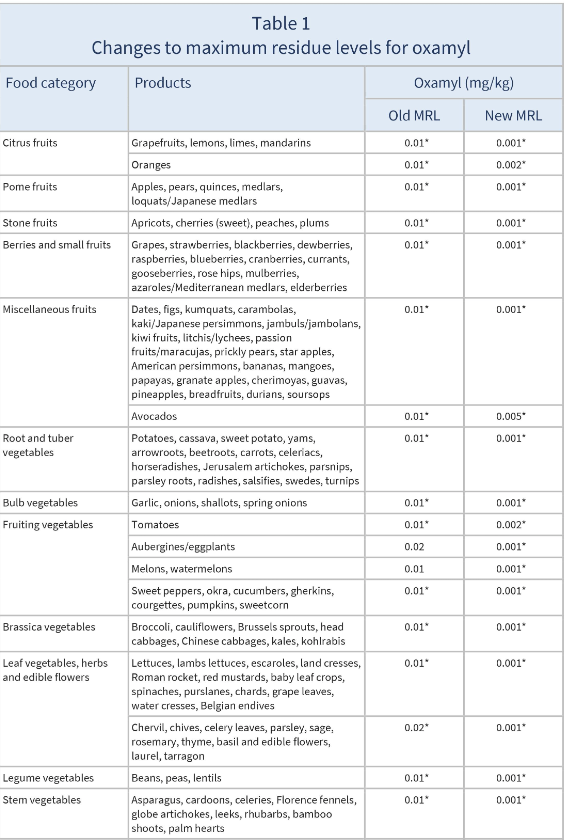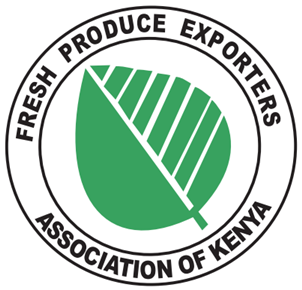- November 20, 2023
- Posted by: admin
- Categories: Advocacy & Lobying, Capacity Building, Compliance & Standards
The European Union will lower the maximum residue limits (MRLs) for oxamyl, with particular impacts on eggplants, melons, and watermelons. For all prod- ucts, the limit of detectation (LOD, the lowest level that can be detected using the most modern and reliable analytical methods) is also being reduced. The changes are due to apply from March 2024.
IMPACTED PRODUCTS
All products, particularly aubergines/eggplants, melons, and watermelons
WHAT IS CHANGING?
The European Union will reduce the LOD for all products listed in Table 1. Most of these values are lower than the standard default LOD of 0.01 mg/kg.
WHY?
All MRLs for oxamyl were already set at the LOD, except for aubergines, melons, and watermelons. However, EFSA (2022) concluded that the default LOD of 0.01 mg/kg does not provide sufficient protection for consumers for most commod- ities, so the LOD for these products should be set at lower, more protective levels (0.005, 0.002, or 0.001 mg/kg). MRLs for aubergine, melon, and watermel- on (which were based on Codex MRLs) are also considered not to provide a sufficient level of protection, and are reduced to the LOD.
TIMELINE
The European Commission’s proposal to lower the MRLs for oxamyl was ap- proved by EU Member States on 18 September 2023. The final Regulation is expected to be published in early 2024 and enter into force 20 days later. The new MRLs will apply 3 months after the Regulation enters into force, approxi- mately March 2024 – the precise date will be known once the Regulation is published. All products on the EU market after March 2024 must comply with the new MRLs, even if they were put on the market before that date. Products exported before March 2024 should therefore also be checked for their compli- ance with the new MRLs.
RECOMMENDED ACTIONS
Exporters of aubergines, melons, and watermelons should urgently review their current use of oxamyl and look for alternative solutions in anticipation of the MRL changes.
Pesticide residue monitoring needs to take into account the new lower LODs set out in Table 1. This change will have implications for laboratories conducting pesticide residue analyses, depending on the methods used.
Non-EU authorities can seek advice from EU reference laboratories (EURLs) on how to achieve these lower levels in residue analysis, by contacting the EURL for Single Residue Methods (SRM) at EURL-SRM@cvuas.bwl.de.
BACKGROUND
MRLs are set in accordance with the rules set out in Regulation 396/2005. For information on current MRLs for other substances, please consult the EU Pesti- cide Residues database.
RESOURCES
EFSA (2022) Peer review of the pesticide risk assessment of the active sub- stance oxamyl. EFSA Journal, 20(5): 7296.
SOURCES
Draft Commission Regulation as regards maximum residue levels for oxamyl in or on certain products


